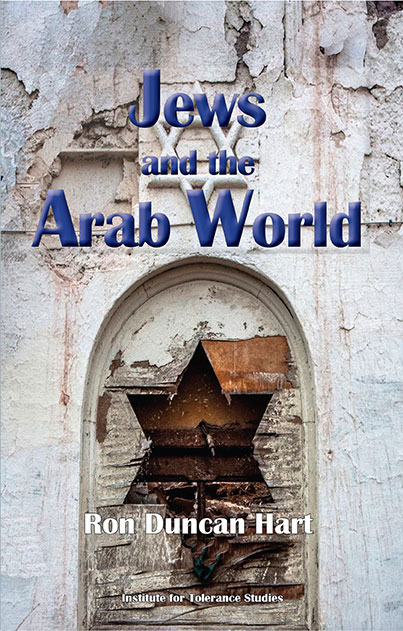
See Gaon authors discussing their works on the
Jewish Learning Channel
www.jewishlearningchannel.com

Sitting in the synagogue in Tangier, Morocco on Shabbat afternoon in 2007, we had completed the Mincha prayers and were waiting to start Ma’ariv. Although this is a modern day synagogue, it was built in the early twentieth century and has the patina of time. The wooden benches gleamed from the generations of people who had sat here reciting from their prayer books and reading the Torah. Men were on the bottom floor, and women looked down from the balcony above, divided by these vertical spheres of life and worship.
I sat next to Leon Azancot, and we were speaking in Spanish, the communal language of the Jews of northern Morocco. He was telling me of the glory days of Tangier in the early to mid-twentieth century when it was an international city (1924-1956). It was wealthy then as trade and money flowed freely. When the Nazis arrived, things turned dark, and they tried to put Jews into concentration camps like they were doing in Tunisia and Algeria.
As Mr. Azancot continued his oral history of Jewish life in Tangier in those days, I overheard one of the other men ask, “Have you heard it yet?” The answer was “No.” I had seen a clock in the entrance way to the synagogue, and I thought maybe he was referring to that. But, as we continued talking, a few minutes later I did hear the muezzin, calling Muslims to the evening prayer.
As soon as we heard the call of the muezzin, every one began picking up their siddurim (prayer books) and the prayer leader went to the bima and began the evening prayers. We had been waiting to hear the muezzin calling Muslims to pray, as an indication that the sun was completely down. In Morocco, Jewish life is intertwined with Muslim life. Jews speak Arabic, as well as Hebrew and European languages. Muslim children go to Jewish schools where they grow up playing with Jewish children, learning, and forming friendships. As adults, Jews marry Jews, and Muslims marry Muslims, but they do business together and attend each others’ weddings and family celebrations. They listen to the same music, read the same novels, and watch the same television shows and movies. In the synagogue during prayer service, an Arabic speaking Jew might call out, “Allah Akbar!” That is Arabic for “God is Great!” Allah in Arabic, God in English, Hashem in Hebrew, three words for one God.
This is a personal journey through the history of Jews and Arabs to the present day. I have narrated many personal experiences in these texts. The photographs in the text are mine. I have balanced my personal experiences from Casablanca to Jerusalem and beyond with the research of others who have helped fill out my understanding of this history and present social and political realities.
This is the history of thousands of years between two peoples who have long lived together, and who have survived the most conflict filled century of that history. Where does it go from here?
About Ron Duncan Hart:
Ron Duncan Hart is a cultural anthropologist (Ph.D. Indiana University) with postdoctoral work at the Centre for Hebrew and Jewish Studies, University of Oxford. Until recently he was a Research Associate of the Latin American and Iberian Institute at the University of New Mexico. Duncan Hart has done research on Jewish traditions in Spain, North Africa, and South America with special attention to the role of Jews and Muslims in the Andalusian exchange. He is former Dean of Academic Affairs at Inter American University of Puerto Rico. He was Project Director in Latin America with the Ford Foundation, the International Development Research Centre of Canada, and UNICEF. He is former president of the Jewish Federation of New Mexico.
Duncan Hart has awards from the National Endowment for the Humanities, National Endowment for the Arts, the National Science Foundation, Ford Foundation, and New Mexico Jewish Historical Society among others.
He has been honored as the Neustadt Lecturer on Judaic Studies (Oklahoma City University) and a Schlezinger Lecturer on Jewish legal history (Ohr Kodesh in Chevy Chase). He has been an invited lecturer at Tulane University, University of Oklahoma, and Xinjiang University (Urumqi, China), National Labor Relations Board, and a senior Fulbright lecturer at the National University, Bogotá, Colombia among others.
He is author and co-editor of the award-winning book Fractured Faiths: Spanish Judaism, the Inquisition and New World Identities and historical consultant for the exhibition of the same title at the New Mexico History Museum in Santa Fe (2016). His most recent books are Judaism (2015) and Sephardic Jews: History, Religion and People (2016). He has a forthcoming book entitled Crypto-Jews: The Long Journey (2020).
ISBN: 978193560389. Paper. $22.95 246 pages
To be available from local bookstores, Amazon.com, and others.
Distributed by Ingram.
For further information
Call 505.920.7771
or send e-mail to gaonbooks@gmail.com.
Institute for Tolerance Studies
Gaon Books
•Home •Sephardic Traditions •Women's Voices •Jewish Thought & Practice
•New Titles •Award Winners •Meet Gaon Authors •About Gaon Books •Contact
Us